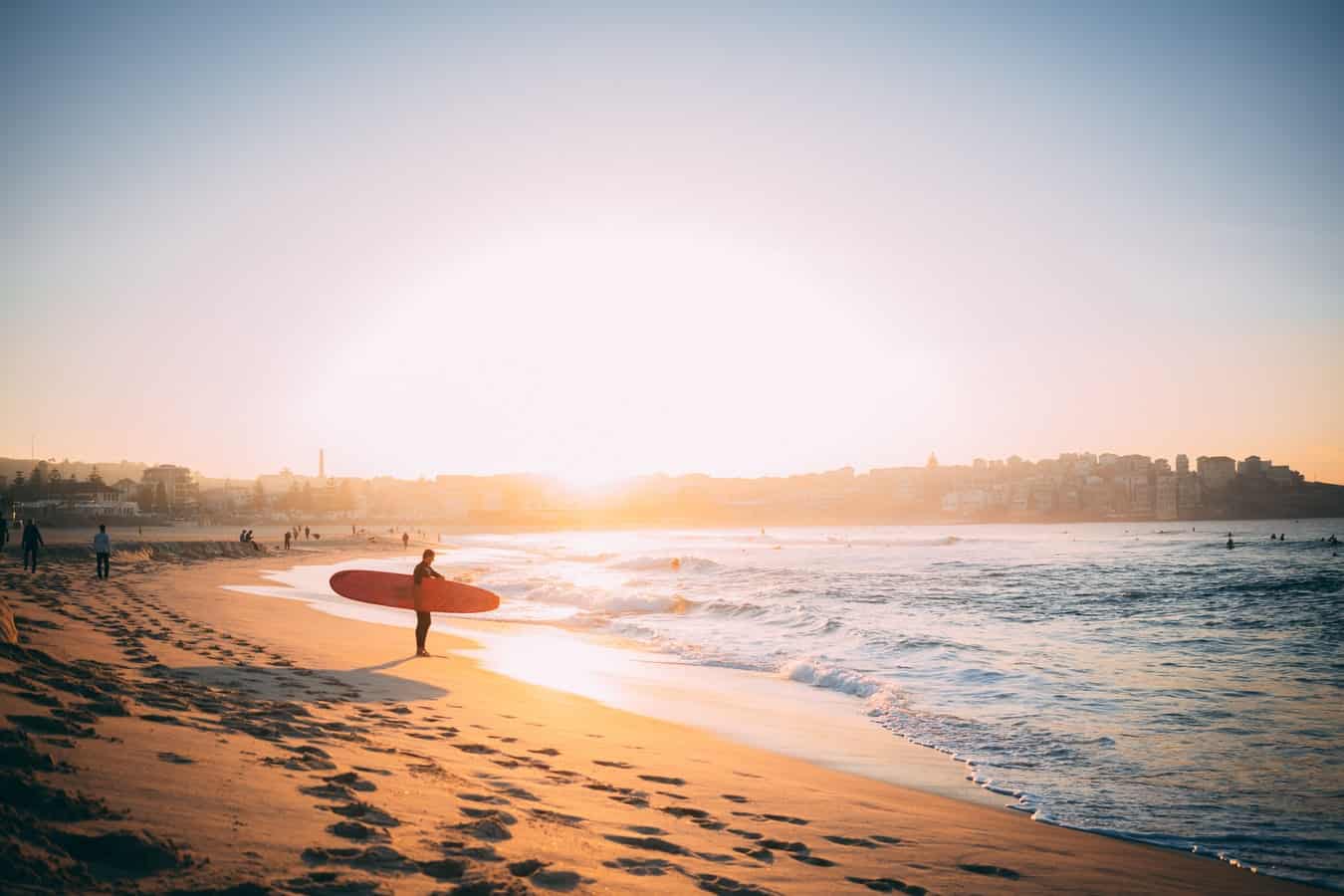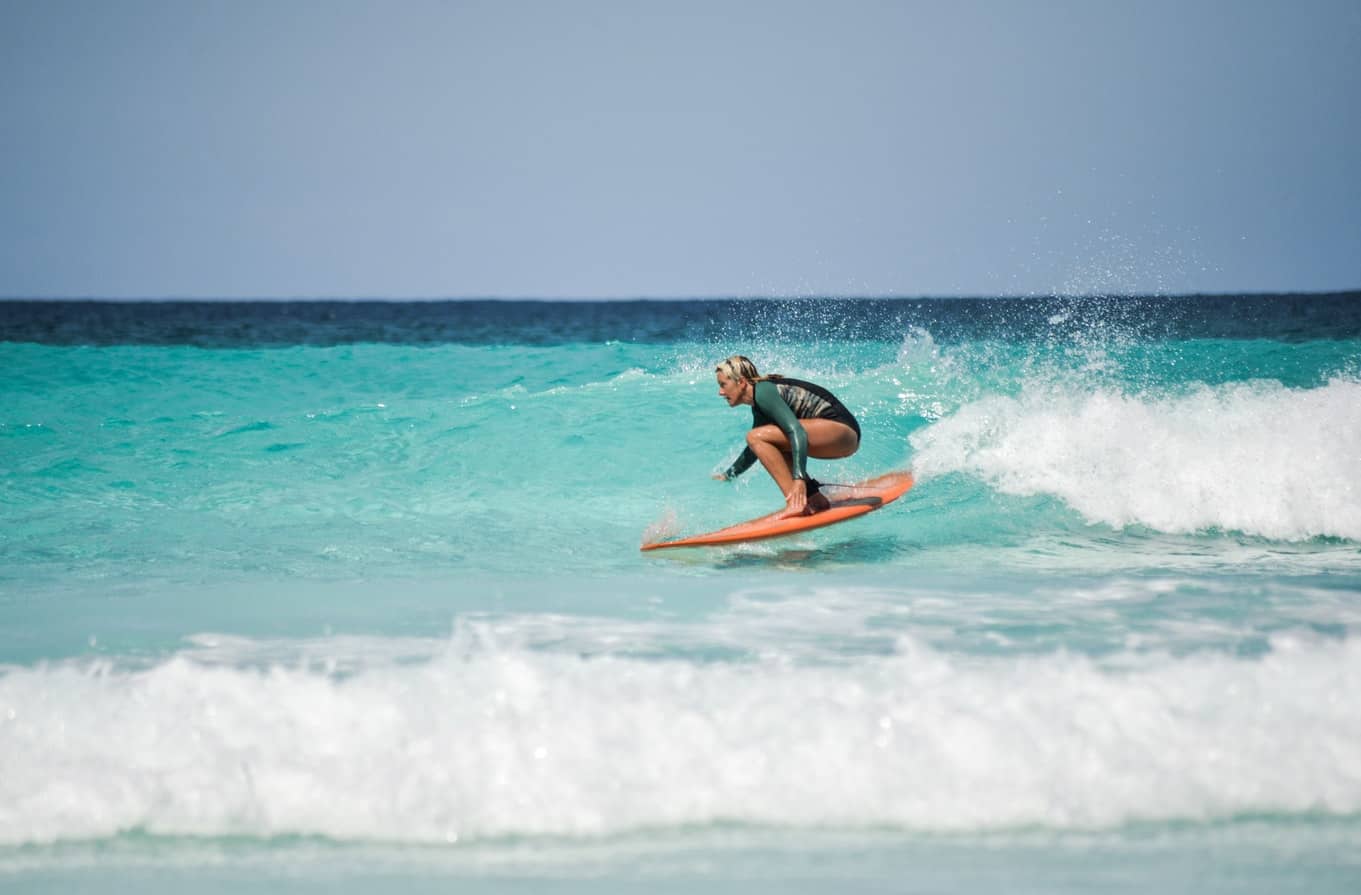Most of the time I’m out in the water, I’m paddling further out in the ocean looking for breaking waves. I’m careful after two decades of being in the surf, and I can tell now when I’m surfing over a sea bed, or when there are rocks under the water and the way waves behave when there are reefs nearby. These markers let me know what kind of waves I can expect. My biggest challenge is getting past different kinds of wave breaks.
How do you get past the break on a longboard? Rolling your longboard under the break until you get past it is the easiest way. Wait for the wave to pass over the board. Known as a “turtle roll,” this technique is virtually guaranteed to get you through whitewater breaks.
How Do You Do A Turtle Roll?
You want to get out to the waves to do some surfing, but breaks are coming into the shore. The first thing to do is to lay flat on your longboard and start paddling.
- Approach the wave lying flat on the board. Wait for the moment when the whitewater comes into contact with the nose of the board.
- The moment the nose touches the break, flip your longboard over until the board is on top of you. The board fins will face upward.
- Now pull the board down to you. Grip the board in the middle of its length or a little further back.
- Move your body to a perpendicular position to the board above you. Your body acts as the longboard’s anchor.
- Remember to grip the rails board tightly; you don’t want to lose hold of it and retrieve it later. It’s easiest to grip a waxed board.
- The force of the break is above you so it can pull away from your longboard easily.so hold on tight!
- Now you can do 1 of 2 things. You can 1) fully extend your arms over your head, which anchors the board even more. This works best with small to medium-sized waves, or 2) Pull down the board to the top of your head. Pull the board hard. You will feel a slight jolt but nothing more.
- The wave breaks over you, so push the board forward in front of you, “punching” the board through the wave. Your longboard will pull you along with it.
- When the wave passes, simply flip
- your longboard back over and get back on. You will now be on the other side of the break and paddling to the next wave. Congratulations!
Is There Another Way To Move Past A Break?
Due to the length and weight of a longboard, duck diving would be very hard. Also, if you ride a longboard that’s over 10 feet long (most are about 12 feet in length), and you are in water that’s shallow, the nose of the board will likely scrape against the sea bottom.
Duck diving is designed for shorter boards as long as 6 feet. The method involves pushing your board under the break by the nose until you’ve cleared the whitewater, then coming up again.
This is near impossible to do on a longboard because of their volume and because they are way too buoyant to push under the waves.
Is There Anything Else I Should Know About The Turtle Roll?
Yes, there are a few more things you should know. With practice, as with most everything in life, you will get better at the turtle roll and know how you get past the break on a longboard.
People who surf abide by several unwritten laws, so it’s important to keep these in mind.
- Keep out of the way of other surfers. Colliding with other surfboards is disruptive to the other surfer, and yourself. Know who’s around you and practice proper distancing.
- Don’t let go of the board when a breaking wave approaches. If you’re new at this and still practicing, wait until there are no surfers around with whom you could collide with.
- Keeping your surfboard with you at all times is what a surfboard leash does. Even professional surfers wear surfing leashes out on the waves. You will always know where you board it, and you can keep the board away from other surfers at the same time.
Here are a few pro tips on how to get your turtle roll just right.
- Don’t ever hold your longboard near the nose when you roll under the waves. The force of the water lifts you and your board and flips you over to land smack on your back.
Remember to grasp the board rails at the edges of the surfboard in the middle of a little behind the center of the longboard.
- Don’t ever wrap your legs around the board when you do a turtle roll. Doing so adds acceleration to the board and the wave will skim you to the beach very quickly.
If the tail of the board digs into the surf, you can cartwheel dangerously backward and injure yourself.
A turtle roll requires practice to get right. But the advantage is that you’re on a longboard, so you can paddle between wave breaks a lot faster. The downside of the longboard is that it’s harder to get through waves than a shortboard or a foam surfboard.

What Are The Different Kinds Of Wave Breaks?
There are three basic kinds of wave breaks that you’ll have to contend with: beach breaks, point breaks, and reef breaks. Each one offers a different kind of challenge. More than half of the hours of surfing you’ll do, you will be paddling and negotiating surf breaks. It’s all about riding the perfect wave where you feel you’re coasting for hours standing on the board. But getting there is what surfing is all about.
Beach Break
This kind of surf break happens in areas where the waves are over a sandy bottom. Tides shift the sands on the sea bed as well as rip currents and weather anomalies. Depending on what’s going on any given day, you could have a surf break in a familiar place you always go, and the next day it could be 300 feet down the shoreline.
Beach breaks are always unpredictable because of the ever-changing nature of the sea floor. If you are just starting out surfing, beach breaks are the best way to learn how to ride and get your longboard under the break. If you should fall or make a mistake, the soft, sandy sea bed will be very forgiving.
Reef break
There are two major differences between beach breaks and reef breaks. While each beach break wave will be a bit different from the one that just came, reef breaks produce waves that are almost carbon copies of each other. This makes certain reef breaks perfect for beginners to surf.
However, the waves reef breaks produce waves that have much more power and surfers can feel the increased force when riding them.
Barrel waves can be found at reef breaks. If you’ve heard the surfer term “riding the tube,” this is what is being referred to. There’s nothing as amazing as riding a barrel wave.
Reef breaks have a consistent sea bottom, unlike beach breaks which accounts for the consistent wave formations.
While the consistent waves attract beginner surfers, reef breaks are located near coral reefs and surfers can get scrapes and deep cuts surfing here. The reefs contain harmful bacteria that can cause infection should you be cut by the sharp coral reef.
Beginners should check with local guides or even look online for maps of the sea floor and pick the safes spots.
Point Break
Hawaii is where several outstanding point breaks are located, especially near Kona, Hawaii. In a point break, the shoreline extends into the ocean, forming a headland, or jetty.
When a wave hits the jetty, it begins to “peel” along the artificial shoreline, making a wave that is well-formed and long, and unlikely to break in or close out in front of itself.
There’s usually only one point of taking off on these kinds of waves, so it’s likely that on a day when everyone is out surfing, you’ll need to wait in line for your turn to ride it. There can be a lag time in between, but the ride will be much longer than normal.
Related Questions
Can I Drown Doing A Turtle Roll?
You are more likely to be killed by a frisbee than drowning in a turtle roll. Flipping over the board under a wave break is one of the safest things you can do in the water.
When you roll under the break with your surfboard, you are close to the surface. If it is low tide, you may be close to the sea bottom. If you come into contact with it, simply stop the roll, hold on to your surfboard, and go back up to the surface.
Should I Allow Space Between The Surfboard And My Body?
Absolutely! When you flip the board, let the force of the water rush through between the longboard and your body. This will allow you to recover much quicker and regain the surface faster.
What’s The Best Way To Improve My Turtle Roll?
There’s no substitute for swimming if you want to be a great surfer. Getting comfortable in the water means that you understand it better. You can practice with a beach ball in a pool. Grip the ball and try to run underwater while holding. It.
If you have a large pool available to you, you can practice turtle rolls without waves until you can do it without too much effort. Remember, to keep your surfboard waxed to make the turtle roll easier to do.

